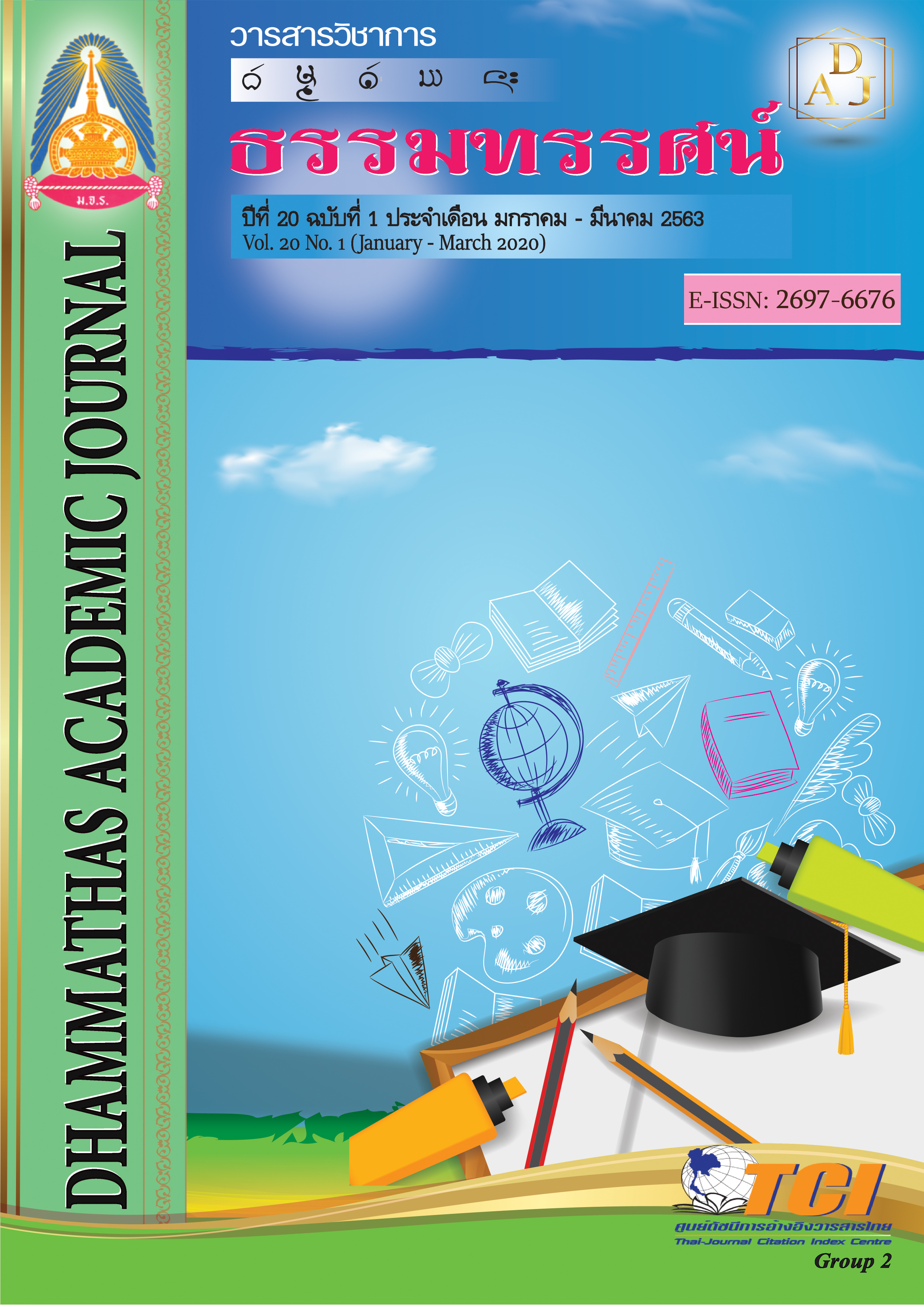Model of Academic Administration for Developing Learners Based on the Threefold Training: Secondary Schools Roikaensarasin Group, Northeastern Thailand
Main Article Content
Abstract
The objectives of this research were to study, design and development basic components of the academic administration based on the Buddhist Threefold Trainings (morality, concentration and wisdom) for developing learners at Roikaensarasin Secondary Schools Group. The sampling group consisted of 226 secondary school principals and vice-principals under offices of 24, 25, 26, and 27 secondary school academicians selected by using stratified sampling. The device for eliciting data was the questionnaire with the content validity between 0.67 and 1.00, and reliability at 0.98. Data were processed with the computer software package to find frequencies, percentages, arithmetic means, standard deviations and Modified Priority Needs Index (PNImodified)
The findings indicated that:
1. Elements of academic administrations based on the Buddhist threefold trainings for developing learners at the target schools involve six domains: curricula and curricula administrations, instructional managements, the research for developing learners, internal supervision of instructions, instructional measurements and assessments, and education quality assurance.
2. The construction of academic administration models based on the Buddhist threefold trainings for developing learners at aforesaid schools has shown ‘Modified Priority Needs Index’ (MPNI) at 0.27 in the overall domain, learning managements at 0.28, internal supervision at 0.27, instructional measurements and assessments at 0.26, the research for developing learners as well as education quality assurance at 0.25, and curricula and curricula managements at 0.24, respectively.
3. Developments of all constructed models of academic administrations based on its threefold training for developing learners have extended to seven goals, 35 approaches, and 33 KPI’s. The first model on curricula and curricula administrations comprises one goal, 4 KPI’s. The second on internal supervision comprises one goal, 6 approaches, 6 KPI’s. The third on instructional measurements and assessments comprises one goal, 5 approaches, 5 KPI’s. The fourth on the research for developing learners’ constitutes comprises one goal, 5 approaches, 5 KP’Is. The fifth on education quality assurance comprises two goals, 5 approaches, 5 KPI’s. The sixth on curricular and curriculum administrations comprised one goal, 6 approaches, 4 KPI’s.

